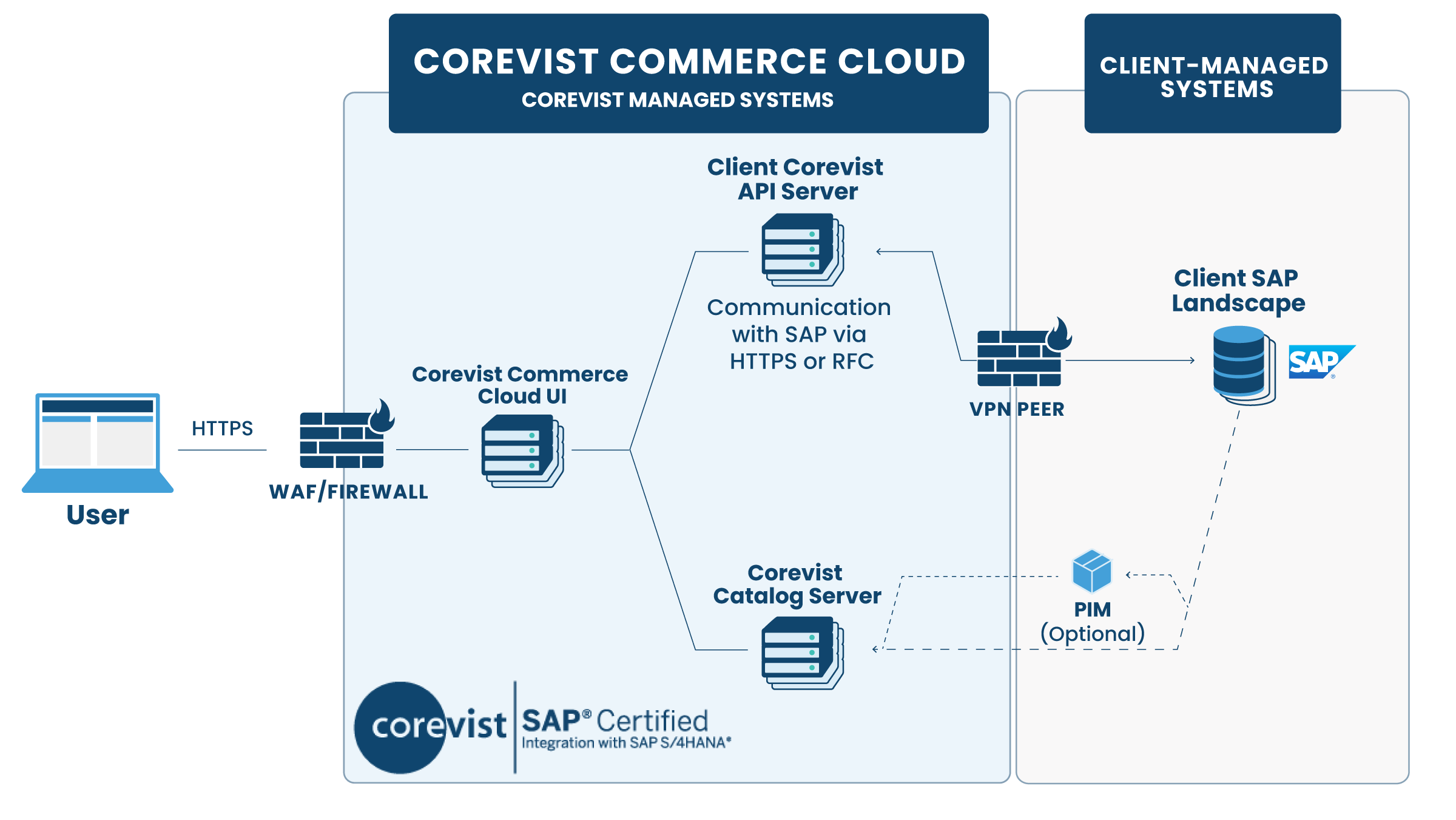
Extend your S/4 investment with Corevist Commerce Cloud
Your organization has gone through the transformation of implementing S/4HANA. You’ve committed to using S/4 as the single source of truth for all business data and logic.
What if you could leverage that investment directly for B2B ecommerce?
Welcome to Corevist Commerce Cloud. With real-time S/4HANA integration included, right out of the box, our platform launches in 30-90 days, no middleware required. You get the B2B ecommerce channel you need—powered directly by your S/4HANA data and logic.

Leverage S/4 for ecommerce without middleware
Cover the entire customer journey, right out of the box.
Amazon-style catalogs
Grow sales and drive loyalty with best-in-class product catalog browsing, fully integrated to S/4HANA.
Real-time price & inventory
Give customers and reps total transparency on price and inventory quantities with real-time data from S/4HANA.
Easy online ordering
End phone, fax, & email ordering with online ordering that’s fully personalized. Orders post instantly to S/4HANA.
Seamless digital payments
Reduce DSO through self-service digital payment workflows within your solution, deeply integrated to S/4HANA.
Self-service tracking
Empower customers to track orders and invoices on any device, no phone calls needed. Real-time data from S/4HANA.
FAQs
Ready to learn more?

Schedule a consultation with us today.
Our specialists will listen to your needs and advise you on a path forward.


